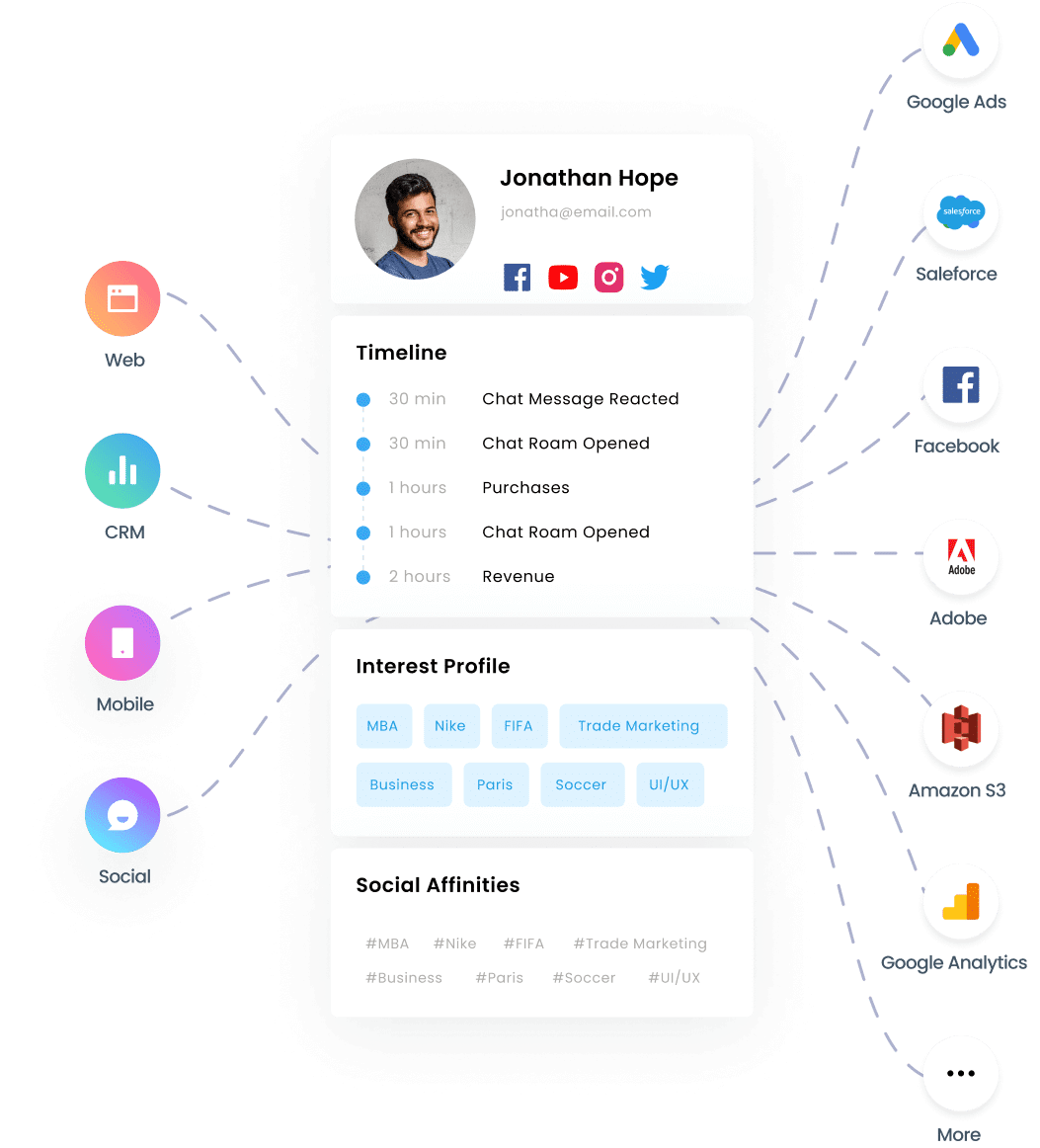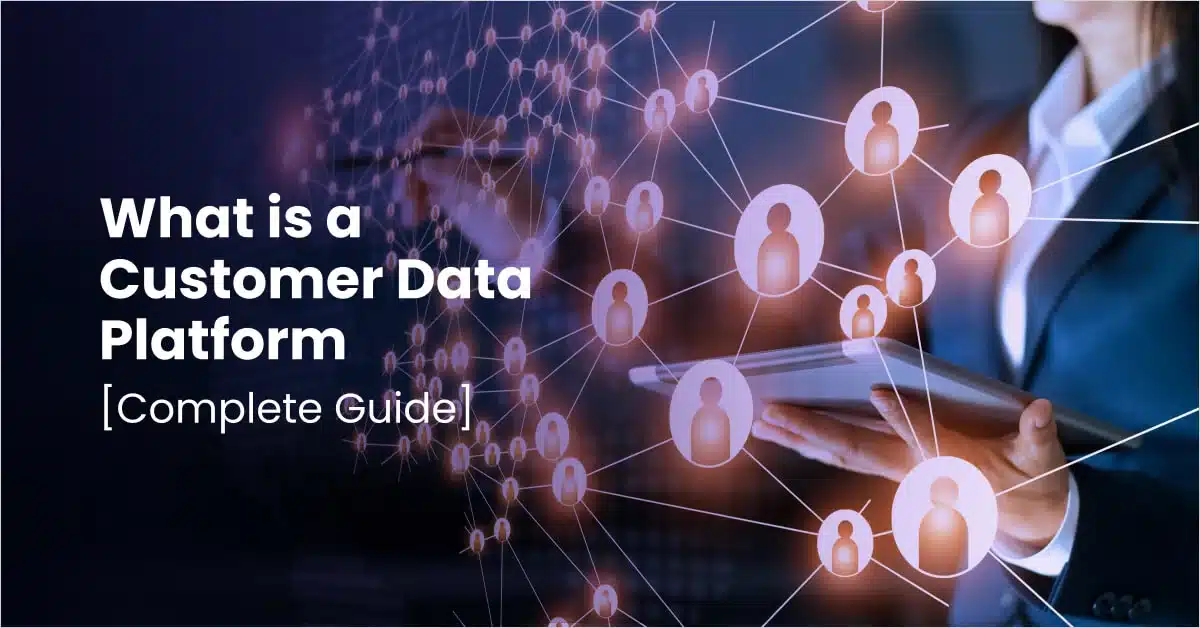How Can Marketers Use a Customer Data Platform (CDP) to Improve Metrics?
Marketers can use a Customer Data Platform (CDP) to collect and analyze customer data, enhance customer journeys, and streamline marketing efforts. By focusing on key features, understanding customer behavior, and improving specific metrics, marketers can see tangible benefits from using a CDP.
What Are the Key Features of a CDP for Marketers?
A CDP collects and unifies customer data from various touchpoints. It can store first-party data like email interactions and purchase history. This data consolidation enables more accurate audience segmentation and personalized marketing campaigns.
CDPs provide real-time data to enhance customer experience. For example, marketers can send timely recommendations or offers to customers based on their online behavior. The data is available for the long term, allowing continuous refinement of marketing strategies.
Integrations with tools like BigCommerce and Shopify help in synchronizing data across platforms. This ensures that marketing campaigns are consistent across all channels, from newsletters to social media ads.
How Does a CDP Help in Understanding Customer Behavior?

Customer behavior is central to effective marketing. A CDP can track and analyze behavioral data, such as website visits and online reviews. It helps in understanding what motivates customers, their preferences, and their overall opinions about a brand.
For example, a CDP can monitor email open rates and click-through rates. This data provides insights into what type of content resonates with customers. Marketers can tailor their campaigns based on this information to increase engagement.
CDPs also allow for tracking lifestyle and career information. Knowing such details helps in creating targeted marketing messages. A user interested in fitness might receive different offers compared to someone interested in home decor. This level of personalization can significantly improve conversion rates.
What Metrics Can Be Improved with a CDP?
A well-implemented CDP can improve several key marketing metrics. Conversion rates can see a boost due to better-targeted campaigns. By analyzing consumer behavior, marketers can create more effective sales funnels.
Click-through rates on emails and online ads are likely to increase. The ability to send personalized content tailored to individual preferences makes marketing efforts more effective. Open rates for emails may also improve as a result of relevant, targeted messaging.
Customer retention metrics benefit from a CDP as well. By understanding the lifecycle and family information of a customer, marketers can offer timely incentives to keep them engaged. Metrics like Customer Lifetime Value (CLV) are positively impacted, showing the long-term benefits of using a CDP.
More about how CDPs can influence marketing metrics can be found at 11 Main customer data platform (CDP) use cases for marketers.
What Are the Benefits of a Customer Data Platform (CDP) for Ecommerce Managers?
A Customer Data Platform (CDP) offers several benefits for ecommerce managers, including improved customer segmentation and personalized marketing.
How Does a CDP Enhance Customer Segmentation?
A CDP enhances customer segmentation by collecting and integrating data from multiple sources. This consolidated data allows for more precise segmentation of the audience.
Ecommerce managers can use this data to create detailed customer segments based on demographics, behavior, and purchase history. For instance, tracking customer behavior across different channels, from email to browsing history, helps build a comprehensive profile.
One key benefit is centralized data. Having all customer data in one place makes it easier to identify trends and common characteristics among distinct customer groups. This is crucial for targeting marketing efforts more effectively.
Additionally, the ability to segment customers accurately can improve campaign performance. By targeting specific segments with tailored messages, ecommerce managers can increase engagement and conversion rates. Learn more about this from Bloomreach on customer data platforms.
What Role Does a CDP Play in Customer Personalization?
The role of a CDP in customer personalization is significant. It allows for personalized customer experiences by leveraging the extensive data collected.
A CDP integrates data from various touchpoints, enabling ecommerce managers to deliver personalized marketing messages. This can include personalized product recommendations, tailored email campaigns, and targeted advertisements.
One of the key advantages is dynamic content personalization. By understanding individual customer preferences, ecommerce managers can dynamically alter website content, email messages, and promotions that resonate more with their audience.
Further, real-time data processing allows for immediate personalization. This means that as soon as a customer completes an action, like viewing a product, the platform can instantly adjust to display related items or offers.
Lastly, the trust factor with data integrity ensures that sensitive customer information is used responsibly, enhancing the overall customer experience. More insights can be found on HubSpot’s guide to Customer Data Platforms.
What Should Marketers Look for When Choosing a Customer Data Platform (CDP)?
Marketers need to ensure a CDP offers essential features and integration capabilities that align with their business needs. Key areas to focus on include core features, integration options, and compatibility with existing systems.
Which CDP Features Are Essential for Marketers?
Identity Resolution: A top feature is the ability to create a single customer profile from data across multiple channels, devices, and touchpoints. This helps marketers understand customer interactions better.
Data Management: Superior CDPs manage both first-party data and platform data efficiently. They should store customer data long-term and allow easy retrieval.
Segmentation and Personalization: Marketers benefit from CDPs that offer advanced segmentation and personalization tools. This enables targeted campaigns tailored to customer preferences.
Compliance: CDPs must be compliant with data privacy laws like GDPR and CCPA. This ensures that customer data is handled responsibly.
Integration with Analytics Tools: CDPs should integrate with tools like Salesforce for enhanced customer insights and sales strategies.
For more on essential CDP features, see Customer Data Platform Basics.
How to Evaluate the Integration Capabilities of a CDP?
Data Sources: Evaluate if the CDP can gather data from multiple sources such as data warehouses, CRMs, and social media. A good example can be found in how some platforms gather data from multiple sources.
Real-time Data Syncing: Real-time data syncing is vital for timely marketing actions. Ensure the CDP supports real-time data updates.
Compatibility: Ensure the CDP is compatible with existing systems, particularly your data management platform (DMP) and other marketing tools.
Ease of Integration: The CDP should offer simple API access and plugins to connect with your current marketing stack.
Scalability: Consider if the CDP can scale as your business grows. The ability to handle larger data sets and more users is crucial.
Choosing the right CDP involves careful evaluation of these integration capabilities to ensure seamless data flow and effective marketing strategies.
How Does a Customer Data Platform (CDP) Drive Data-Driven Marketing?
A Customer Data Platform (CDP) significantly enhances marketing efforts by leveraging customer data to create more personalized and effective marketing campaigns. It enables real-time marketing and supports various data-driven marketing strategies.
What Are Data-Driven Marketing Strategies Enabled by a CDP?
A CDP allows marketers to utilize first-party data and third-party data to build a comprehensive understanding of individual customers. By integrating identity resolution and creating a unified customer profile, businesses can tailor their marketing campaigns more precisely.
Machine learning algorithms and analytics tools within a CDP help generate valuable insights from transactional data and qualitative data. This helps in segmenting customers based on demographic information, preferences, and behaviors. Marketing automation platforms connected to a CDP can then execute personalized campaigns across multiple channels.
A CDP also supports data activation, enabling businesses to utilize descriptive data and reporting to measure the success of their marketing efforts. Leveraging artificial intelligence within the CDP provides advanced customer insights, ensuring that every interaction is relevant and engaging.
How Does a CDP Facilitate Real-Time Marketing?
Real-time marketing is made possible by the real-time customer interactions that a CDP supports. By aggregating data from various apps, websites, and customer touchpoints, a CDP updates centralized customer profiles in real time.
This enables the creation of a unified view of the customer, allowing for immediate responses to customer actions. For example, when a customer makes a purchase, the CDP can trigger related marketing campaigns in seconds. This immediate response capability enhances customer experiences and boosts engagement rates.
CDPs also integrate with existing marketing platforms and the broader martech stack, ensuring that customer data flows seamlessly between systems. This integration helps in real-time decision-making, providing marketers with up-to-date business intelligence and marketing analysis that drives better results.
For more details, you can read what a Customer Data Platform (CDP) is and how it helps in personalizing the customer experience at scale. Additionally, explore the different Enterprise Data Platform options available.
How Can Ecommerce Managers Leverage a Customer Data Platform (CDP) to Increase Sales?
Ecommerce managers can use a Customer Data Platform (CDP) to gain deeper insights into customer behaviors and optimize marketing strategies. This leads to more personalized experiences and higher sales.
What Sales Tactics Can Be Enhanced with a CDP?
A CDP allows ecommerce managers to create detailed customer profiles by collecting data from various sources, such as purchase history and social media activity. This data can be used to tailor marketing campaigns to individual customer needs. Personalized emails, product recommendations, and targeted offers can significantly improve conversion rates.
CDPs also help with retargeting efforts by tracking site traffic and customer interactions across channels. Managers can use this information to re-engage customers who abandoned their carts, leading to higher conversion rates. Additionally, understanding customer lifetime value helps in segmenting high-value customers for special loyalty programs and exclusive offers.
How Does a CDP Support Omnichannel Marketing?
CDPs help ecommerce managers coordinate a seamless customer journey across different touchpoints. By integrating data from email, social media, and website activity, a CDP ensures that the customer experience is consistent across all channels.
This data orchestration allows for more effective campaign management. For example, a customer who clicks on a social media ad can receive follow-up emails tailored to their interests, driving them back to the website for a purchase.
Omnichannel strategies supported by a CDP also track the success of various marketing efforts. By analyzing metrics like site traffic and conversion rates, managers can refine their strategies to focus on the most effective channels, improving overall campaign performance.
For more detailed strategies on integrating customer data, visit CDP Basics.
Explore CDP strategies to better understand how to implement these tactics effectively.
How to Implement a Customer Data Platform (CDP) Successfully?
Implementing a Customer Data Platform (CDP) involves multiple steps to ensure reliable data management and integration. This process demands careful planning and attention to data quality.
What Are the Steps for Implementing a CDP?
First, assess your readiness by evaluating your organization’s goals, technical requirements, and data infrastructure. Engaging stakeholders from different departments is crucial in this phase to align everyone’s objectives.
Next, select the right CDP by comparing features and capabilities that meet your needs. A customer data platform that provides robust data ingestion, integration, and analytics is ideal.
Then, prepare your data by identifying what customer data you have and where it resides. Consider using tools to facilitate data collection from various sources, such as CRM systems and eCommerce platforms.
After that, implement ETL processes to extract, load, and transform your data. Ensuring your CDP can seamlessly integrate with existing data lakes and transactional systems is vital for consistent data flow.
Finally, test and refine your CDP setup. Conduct pilot tests to ensure data is accurately managed and insights are actionable. Continually monitor performance and make adjustments as needed.
How to Ensure Data Quality and Consistency in a CDP?
Maintaining data quality and consistency starts with effective data management platforms. Implement strong data governance policies to define how data should be collected, stored, and accessed.
Standardize data formats and naming conventions across all sources. This practice prevents inconsistencies and simplifies data integration. Use automated tools to cleanse and validate incoming data, ensuring it is free from errors and duplicates.
Establish a single source of truth by centralizing customer data in the CDP. This approach eliminates silos and ensures that every department works with the same accurate data.
Monitor data flow continuously. Regular audits and automated monitoring tools help detect anomalies early, safeguarding data integrity.
Train your team on best practices for data entry and management. Educating end-users on the importance of data accuracy enhances overall efficiency and reliability.
How Does a Customer Data Platform (CDP) Ensure Data Privacy and Security?
A Customer Data Platform (CDP) ensures data privacy and security by implementing strict protocols and advanced technologies. These methods protect customer information and comply with regulations like the GDPR and CCPA.
What Measures Does a CDP Take for Data Privacy?
A CDP takes several measures to ensure data privacy. One significant step is compliance with data privacy regulations such as GDPR and CCPA. Compliance means that customers have control over how their personal data is used. They can grant or withdraw consent, request data deletion, and know how their data is being utilized.
Data governance is another crucial aspect. CDPs enforce strict data governance policies to manage data accuracy, usability, and security. These policies ensure that personal customer data is handled responsibly and ethically.
CDPs also combat data silos by centralizing data from various sources into one secure platform. This centralization makes it easier to monitor data privacy practices and avoid unauthorized data access.
How Is Data Secured in a CDP?
Data security in a CDP is achieved through various technological solutions. Encryption methods are used to protect data both in transit and at rest. This means that even if data is intercepted, it cannot be read without the decryption key.
Authentication and authorization protocols ensure that only authorized personnel have access to sensitive data. Multi-factor authentication adds an extra layer of security, requiring multiple forms of verification before access is granted.
CDPs also undergo regular security audits and assessments to identify and fix vulnerabilities. By continuously monitoring security protocols, CDPs maintain a secure environment for customer data.
Additionally, data privacy regulations like GDPR and CCPA require that businesses employ strict security measures. Compliance with these regulations ensures that customer information is stored and handled with the utmost care, reducing the risk of breaches.
Frequently Asked Questions
Customer Data Platforms (CDPs) are vital for businesses looking to improve customer engagement, making sense of large amounts of customer data, and integrating with various marketing technologies.
How do Customer Data Platforms differ from Customer Relationship Management systems?
Customer Data Platforms (CDPs) and Customer Relationship Management (CRM) systems serve distinct purposes. CDPs collect data from different sources, creating a unified customer profile. In contrast, CRMs manage customer interactions and relationships. While a CRM focuses on sales and customer service activities, a CDP offers a centralized database to enhance customer experiences at scale by providing detailed insights.
Can you list some top Customer Data Platforms available in the market?
Several reputable CDPs are available today. Some of the top choices include Segment for its robust integration capabilities and Tealium for its real-time customer data orchestration. Other notable platforms are Adobe Experience Platform, Treasure Data, and BlueConic, each offering unique features tailored to different business needs.
What are the key functionalities of a Customer Data Platform?
A CDP comes with several essential functionalities. It integrates customer data from multiple sources, provides a unified customer profile, and enables real-time data analysis. Additionally, it supports data privacy and compliance requirements. These features make the data more accessible and useful across different marketing and sales systems.
In what ways can a business benefit from implementing a CDP?
Implementing a CDP brings numerous advantages. It allows businesses to create personalized marketing campaigns, improving customer engagement and satisfaction. The platform aids in identifying customer trends and preferences. Companies can thus refine their strategies. Overall, it drives better decision-making by providing a comprehensive view of customer behaviors.
What are some common use cases for Customer Data Platforms?
Common use cases involve personalized marketing, customer segmentation, and improved customer support. Businesses use CDPs to deliver tailored content and offers to customers. They also leverage the platform for precise customer segmentation based on data-driven insights. Additionally, CDPs enhance customer support by providing unified and updated customer information.
How does a Customer Data Platform integrate with other marketing technologies?
CDPs integrate seamlessly with various marketing technologies by acting as a central data hub. They can connect with tools like HubSpot and Salesforce to synchronize customer data. This integration ensures that marketing, sales, and support teams have access to consistent and comprehensive customer information, enabling more effective campaigns and improved customer experiences.



